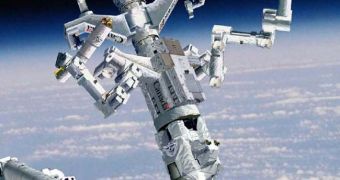Though many people might not know this, we currently have the technology to perform in-orbit repairs on satellites, and also to refuel them as they go. The best example of this is the Hubble Space Telescope, one of the more renowned satellites in the world, which has thus far received five servicing missions, all of them conducted by NASA space shuttles. Being able to use platforms such as the International Space Station (ISS) for refueling could boost our orbital capabilities, but senior officials and government representatives need to acknowledge that this is possible, Space reports.
This is the conclusion of a new workshop that was held at the University of Maryland University College in Adelphi, between March 24-26. The event, which was sponsored by the NASA Goddard Space Flight center (GSFC), united numerous space and aeronautics experts in the same room. It also allowed the specialists to devise potential plans for seeing orbital refueling becoming a reality relatively soon. “It's pretty clear. The time for study is over. We have now got to move forward,” the GSFC Space Service Capabilities Office Deputy Associate Director, Frank Cepollina, says.
What NASA plans to do is essentially demonstrate that refueling processes can be conducted in orbit autonomously, without too much human intervention. For example, at the workshop, many said that satellites might benefit from the aid of the Canadarm2, one of the robotic arms aboard the orbital facility that was constructed by the Canadian Space Agency (CSA). Experts say that existing spacecraft may benefit from the refueling system as well, and not only those built specifically for this purpose. At this point, the feasibility and potential costs of in-orbit satellite servicing are being assessed in a new scientific study, whose results will be presented to the Congress in September.
“We are trying to develop the dexterity of robots to fix spacecraft so they can continue to do their jobs. You would never buy a car that was not repairable, why should we buy a satellite that's not?” Cepollina, who has been the lead engineer for the repair missions destined for Hubble, adds. The challenge is to include spacecraft that revolve around the planet in geosynchronous orbits in the new plan. These machines travel some 14,000 kilometers above the surface of the planet, whereas the ISS orbits at much lower altitudes.

 14 DAY TRIAL //
14 DAY TRIAL //